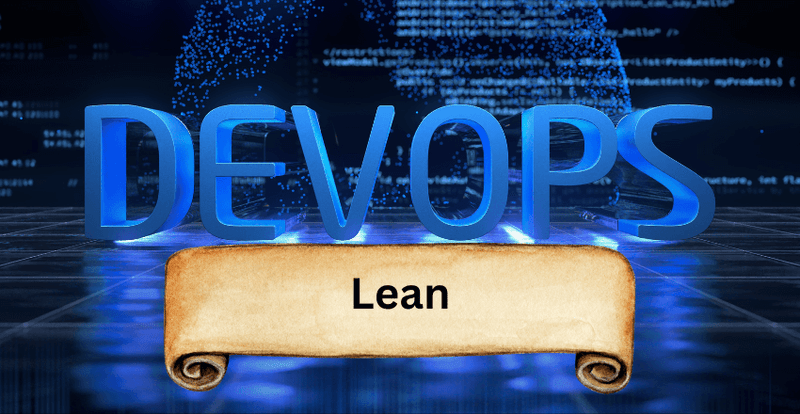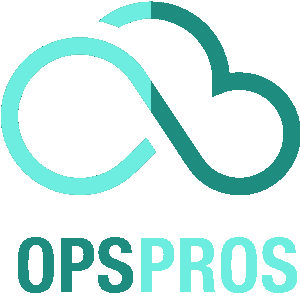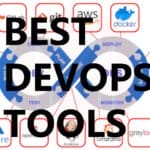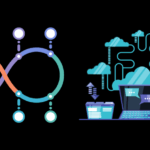
DevOps Lean Principles streamline software development, ensuring efficiency and value with continuous delivery, waste reduction, and robust feedback loops.
Optimizing DevOps processes is becoming increasingly important in today’s fast-paced, competitive business environment. DevOps Lean, a combination of DevOps and lean methodology, has proven to be an effective approach to achieving this optimization. By embracing DevOps Lean principles, organizations can enhance productivity, reduce waste, and drive innovation.
What is DevOps Lean?
DevOps Lean is a methodology that combines the best practices of DevOps and lean principles to optimize development processes. DevOps, as the name suggests, is a fusion of Development and Operations teams that aims to streamline the software development process and ensure faster delivery times with better quality software.
On the other hand, lean is a manufacturing philosophy that focuses on minimizing waste, optimizing processes, and maximizing customer value.
The DevOps Lean approach seeks to eliminate the traditional silos between development, testing, and operations and establish a culture of continuous integration and delivery.
In the DevOps Lean methodology, the development and operations teams work in close collaboration, sharing responsibility for the entire software development lifecycle, and working towards the common goal of delivering high-quality software in a timely manner.

Key concepts in DevOps Lean
DevOps Lean combines the best practices of DevOps and lean methodology to optimize development processes. Understanding key concepts is critical to implementing DevOps Lean effectively. Let’s explore some of these concepts below:
Continuous Integration
Continuous Integration (CI) refers to the practice of automatically building and testing code changes as soon as they are submitted to a version control repository. This ensures that code changes are constantly being integrated and tested, reducing the risk of errors and conflicts down the line.
Continuous Deployment
Continuous Deployment (CD) is the practice of automatically deploying code changes that pass the CI tests to production. This enables organizations to release updates at a faster pace, while maintaining high quality and reducing risk.
Value Stream Mapping
Value Stream Mapping (VSM) is a tool used to visualize the entire software development process, from idea to deployment. It helps organizations identify waste, inefficiencies, and bottlenecks in their processes and allows them to focus on improving the value delivered to customers.
Infrastructure as Code
Infrastructure as Code (IaC) is the practice of writing and managing infrastructure configuration as code. This enables organizations to automate infrastructure provisioning and deployment, reducing errors, and ensuring consistency across environments.
By understanding and implementing these key concepts, organizations can optimize their development processes and drive continuous improvement.
Implementing DevOps Lean in your organization
The following tips and strategies will help you optimize your DevOps processes and achieve better outcomes:
1. Establish a culture of collaboration and continuous improvement
DevOps means breaking down silos and bringing Development and Operations teams together. Encourage collaboration and communication between team members to ensure everyone is working towards the same goals. Implement a culture of continuous learning and improvement, encouraging team members to share feedback and ideas to improve processes and workflows.
2. Automate everything you can
Automating repetitive tasks frees up your team’s time and reduces the risk of human error. Use tools like Ansible, Jenkins, and Terraform to automate tasks such as testing, deployment, and infrastructure provisioning. By automating mundane tasks, you can ensure that your team can focus on higher-value activities that require human decision-making and creativity.
3. Implement continuous integration and delivery (CI/CD)
Continuous integration and delivery are key principles of DevOps Lean. Implementing CI/CD in your organization means that your team can focus on delivering features and functionality to end-users quickly and frequently. Use tools like GitLab, Jenkins, and CircleCI to automate testing and deployment processes.
4. Monitor and measure everything
Monitoring and measuring your processes and workflows is essential for continuous improvement. Use tools like Prometheus, Grafana, and Kibana to monitor system metrics, logs, and performance. Implement value stream mapping to visualize your development processes and identify bottlenecks and improvement opportunities.
5. Use infrastructure as code (IaC)
Using infrastructure as code means that you can treat your infrastructure like code, versioning it, and automating its provisioning and configuration. Use tools like Terraform, Ansible, and CloudFormation to version, automate, and manage your infrastructure. IaC ensures that your infrastructure is consistent, reliable, and repeatable.
By following these tips and strategies, you can optimize your DevOps processes and achieve greater efficiency and innovation in your organization.
Benefits of DevOps Lean

Adopting DevOps Lean practices offers numerous benefits to organizations. This section explores some of the key benefits of implementing DevOps Lean and optimizing DevOps processes using lean methodology.
Efficiency
DevOps Lean allows organizations to streamline their processes, resulting in increased efficiency. By identifying and eliminating wasteful activities, teams can focus their efforts on the tasks that bring the most value to the organization. This helps reduce lead times, decrease development costs, and improve overall productivity.
Innovation
DevOps Lean promotes a culture of innovation by encouraging experimentation and continuous learning. By breaking down silos and promoting collaboration between development and operations teams, organizations can create an environment that fosters innovation and creativity. This can lead to the development of new products and services, as well as improved existing offerings.
Waste Reduction
DevOps Lean emphasizes the elimination of waste in development processes, such as unnecessary hand-offs, waiting times, and defects. By focusing on value-adding activities, waste can be minimized, resulting in reduced costs and improved quality. This approach also helps to ensure that software releases are delivered quickly and with fewer defects, resulting in increased customer satisfaction.
Enhanced Business Outcomes
By optimizing DevOps processes using lean methodology, organizations can achieve enhanced business outcomes. DevOps Lean can help organizations deliver high-quality products and services faster, with fewer defects, and at lower costs. This can help organizations stay ahead of their competition, improve customer satisfaction, and increase revenue.
Industry Examples of Successful DevOps Lean Implementation
Example 1: Netflix

| Company | Netflix |
|---|---|
| Industry | Entertainment |
| Challenges Faced | Scaling up rapidly, handling large amounts of data, ensuring high availability |
| Solutions Implemented | Automated testing, continuous deployment, microservices architecture, value stream mapping |
| Outcomes Achieved | Reduced lead time, improved deployment frequency, increased reliability, enhanced customer satisfaction |
Netflix is a prime example of a company that has successfully implemented DevOps Lean principles to transform its software delivery process. By adopting a continuous delivery model and leveraging microservices architecture, Netflix has been able to scale rapidly and provide a reliable, high-quality service to its millions of users.
Example 2: Target

| Company | Target |
|---|---|
| Industry | Retail |
| Challenges Faced | Handling large volumes of traffic, ensuring high availability, reducing time-to-market |
| Solutions Implemented | Continuous integration, automated testing, deployment pipelines, lean methodology |
| Outcomes Achieved | Reduced lead time, increased deployment frequency, improved efficiency, enhanced customer experience |
Target is another excellent example of an organization that has embraced DevOps Lean principles to optimize its software delivery processes. By implementing continuous integration, automated testing, and deployment pipelines, Target has been able to reduce its lead time significantly and increase deployment frequency, allowing it to deliver new features and updates to customers faster than ever before.
Challenges and Solutions in DevOps Lean Adoption
Adopting DevOps Lean principles can bring tremendous benefits to an organization’s development processes. However, like any significant change, there may be challenges to overcome during adoption. Here are some of the common challenges organizations may face and solutions to address them.
Challenge: Resistance to Change
Some team members may resist changes to their established processes, particularly if they don’t fully understand the benefits that DevOps Lean can bring.
“The most significant challenge we had was the mindset change. We had to get people to look at things differently, and that took time and patience.”
Solution: Education and Communication
Leaders should communicate the benefits of DevOps Lean to their teams and provide education on new processes and best practices. Leaders can also demonstrate the impact of DevOps Lean through pilot projects or proof-of-concept efforts.
Challenge: Siloed Teams
In larger organizations, development and operations teams may work in silos, making it difficult to implement a unified DevOps Lean approach.
“We found that the biggest challenge was the cultural divide between the development teams and the operations teams. We needed to break down the silos and promote collaboration.”
Solution: Cross-Functional Teams
Organizations can form cross-functional teams that include members from development, operations, and other areas to promote collaboration and teamwork. Regular meetings and communication channels can also enable teams to share knowledge and work together more effectively.
Challenge: Lack of Automation
Manual processes can lead to errors and inefficiencies in development and deployment.
“We were spending too much time on manual tasks, which was causing delays and increasing the risk of errors.”
Solution: Automation
Automation tools can help optimize and streamline processes, reducing the risk of errors and freeing up team members’ time to focus on more creative and strategic tasks. Organizations can use tools such as continuous integration and continuous deployment (CI/CD) pipelines to automate testing, building, and deployment processes.
By anticipating and addressing these challenges, organizations can overcome obstacles and successfully implement DevOps Lean practices to optimize their development processes.
DevOps Lean is not just a buzzword; it is a proven methodology that can transform your organization. By prioritizing efficiency, waste reduction, and innovation, businesses can optimize their DevOps processes and meet the demands of an ever-changing market. So embrace DevOps Lean, optimize your processes, and achieve your business goals.
External Resources
FAQ
FAQ 1: How Does Lean Philosophy Integrate with DevOps Practices?
Question: What is the relationship between Lean philosophy and DevOps practices?
Answer: Lean philosophy in DevOps focuses on eliminating waste, optimizing value streams, and improving efficiency in the software development and deployment process.
Code Sample: Dockerfile for Minimal Container Image
FROM alpine:latest
RUN apk add --no-cache python3 py3-pip
COPY . /app
WORKDIR /app
RUN pip install -r requirements.txt
CMD ["python", "app.py"]
This Dockerfile uses Alpine, a minimal base image, demonstrating Lean’s principle of eliminating waste by creating lightweight containers.
FAQ 2: How Can DevOps Implement Lean Principles in Continuous Delivery?
Question: How can Lean principles be applied in DevOps for continuous delivery?
Answer: Lean principles in continuous delivery involve automating repetitive tasks, minimizing hand-offs, and ensuring a smooth flow of work from development to production.
Code Sample: Jenkins Pipeline for Continuous Delivery
pipeline {
agent any
stages {
stage('Build') {
steps {
sh 'echo "Building application..."'
}
}
stage('Test') {
steps {
sh 'echo "Running tests..."'
}
}
stage('Deploy') {
steps {
sh 'echo "Deploying to production..."'
}
}
}
}This Jenkinsfile represents an automated pipeline, embodying Lean principles by streamlining the build, test, and deployment processes.
FAQ 3: How Does Lean in DevOps Improve Software Quality?
Question: In what ways does incorporating Lean methodologies into DevOps practices improve software quality?
Answer: Lean methodologies in DevOps enhance software quality by promoting early and frequent testing, reducing defects, and ensuring value delivery aligns with customer needs.
Code Sample: Unit Testing Script in Python
import unittest
class TestApplication(unittest.TestCase):
def test_feature(self):
# Test code goes here
self.assertEqual(expected_feature_output, actual_output)
if __name__ == '__main__':
unittest.main()This Python unit test script exemplifies early and frequent testing, a Lean approach to maintaining high software quality.
FAQ 4: How Do DevOps Lean Practices Ensure Efficient Resource Utilization?
Question: How do Lean practices within DevOps ensure efficient use of resources?
Answer: DevOps Lean practices focus on optimizing resource allocation, avoiding overproduction, and utilizing automation to make the most efficient use of available resources.
Code Sample: Terraform for Infrastructure Provisioning
resource "aws_instance" "web_server" {
count = var.server_count
instance_type = "t2.micro"
ami = "ami-0c55b159cbfafe1f0"
}This Terraform code dynamically provisions the necessary number of instances, adhering to Lean’s principle of avoiding overproduction.
FAQ 5: How Can Lean Metrics be Used in DevOps to Track Performance?
Question: How are Lean metrics utilized in DevOps to track and improve performance?
Answer: Lean metrics in DevOps, such as lead time, cycle time, and throughput, are used to measure and improve the efficiency of the development and deployment processes.
Code Sample: Prometheus Metric for Monitoring Lead Time
- job_name: 'lead_time'
metrics_path: '/metrics'
static_configs:
- targets: ['leadtime_exporter:9100']This configuration for Prometheus sets up the collection of lead time metrics, a Lean metric important in DevOps for measuring efficiency.

James is an esteemed technical author specializing in Operations, DevOps, and computer security. With a master’s degree in Computer Science from CalTech, he possesses a solid educational foundation that fuels his extensive knowledge and expertise. Residing in Austin, Texas, James thrives in the vibrant tech community, utilizing his cozy home office to craft informative and insightful content. His passion for travel takes him to Mexico, a favorite destination where he finds inspiration amidst captivating beauty and rich culture. Accompanying James on his adventures is his faithful companion, Guber, who brings joy and a welcome break from the writing process on long walks.
With a keen eye for detail and a commitment to staying at the forefront of industry trends, James continually expands his knowledge in Operations, DevOps, and security. Through his comprehensive technical publications, he empowers professionals with practical guidance and strategies, equipping them to navigate the complex world of software development and security. James’s academic background, passion for travel, and loyal companionship make him a trusted authority, inspiring confidence in the ever-evolving realm of technology.






